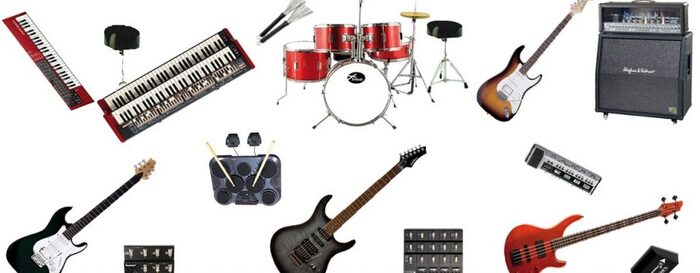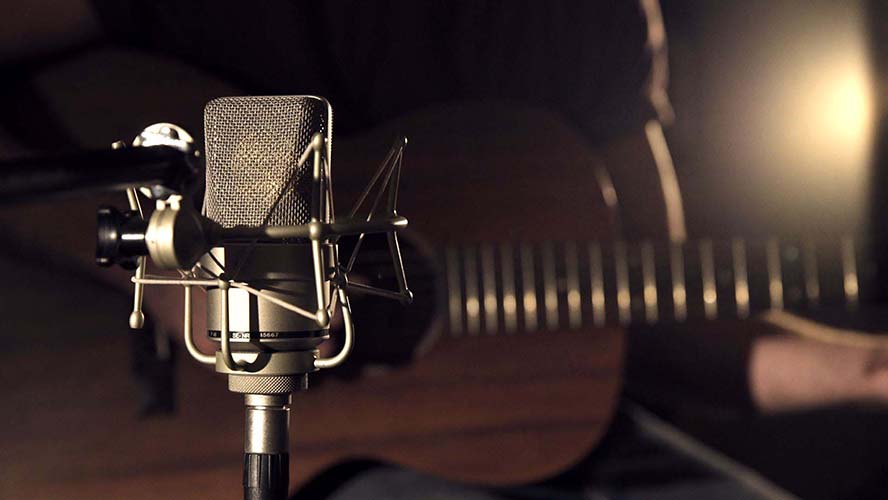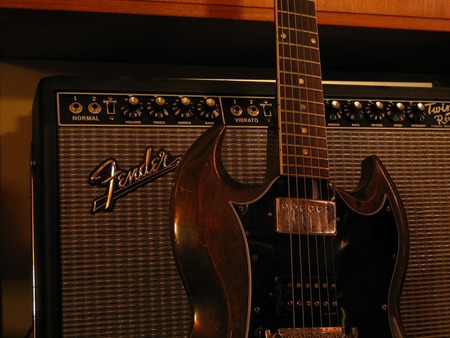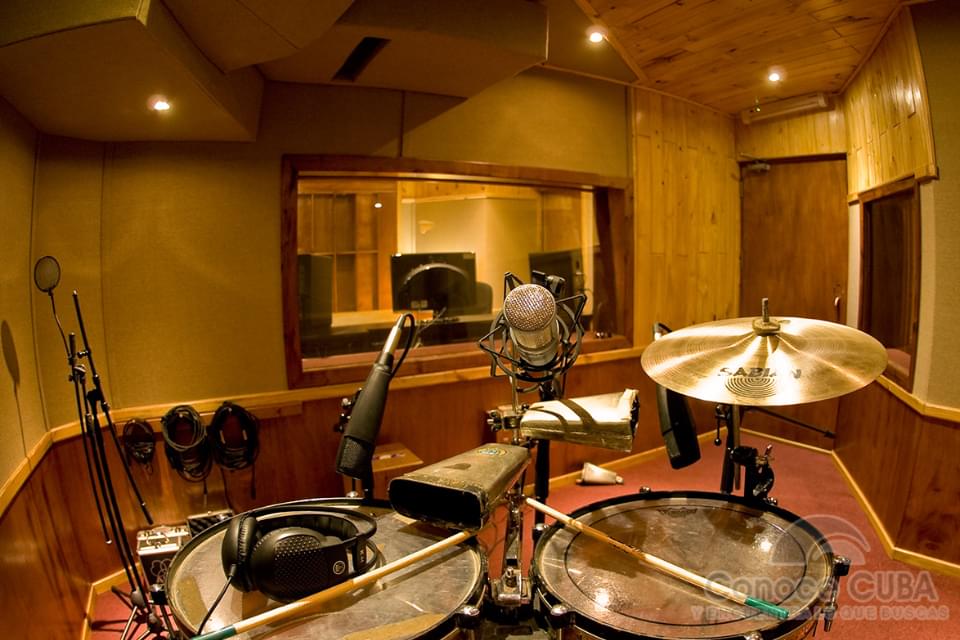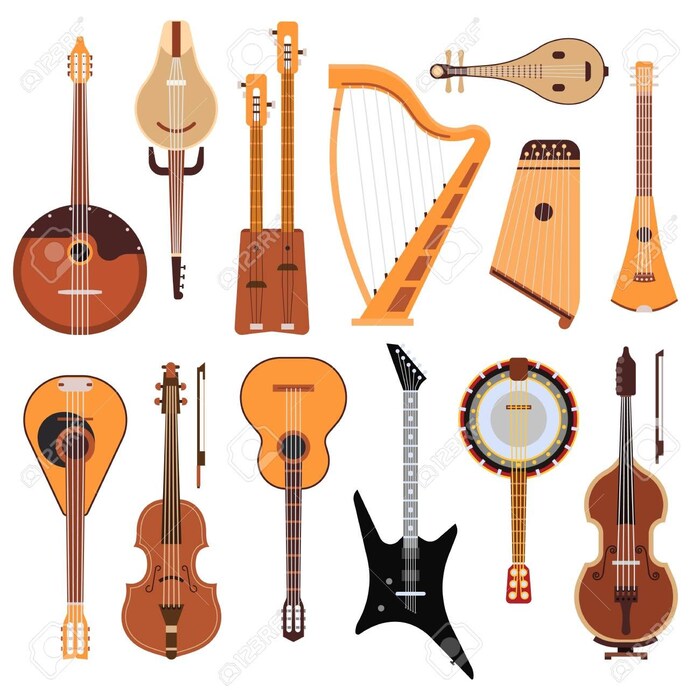WHERE THE BIG HITS ARE BORN
The Greatest Ideas
THE BEST SOUND for the SOUL
Do you know that there are more than 600 musical instruments around the world? How many of them would you be able to play?
In this website we collect all the information about Musical Instruments, in addition to teaching everything related to music.
HISTORY OF THE INSTRUMENTS
Legend has it that the Thoth God was walking along the banks of the Nile River when he heard a strange sound from a reed bed stirred by the sea breeze. He was so captivated by those harmonious notes that he approached to discover where that melody came from, his surprise was when he found it coming from a turtle shell, to which he adherían tendons and dry nerves. The wind, caressing them, produced that melody.
Thanks to this discovery, the God of music believed that it would be the first musical instrument, which would end up transformed into what we know today as the lyre.
To find the origin of music we have to go back several thousand years. The first sounds did not come from any musical instrument but were made with different parts of the body with actions as daily as whistling, clapping or hitting a wooden box.
Although it was believed that the instruments were born 35,000 years ago, in 2009 a flute made from a bone of a griffon vulture was found in the city of Geibenklösterle (Germany) that was about 45,000 years old.
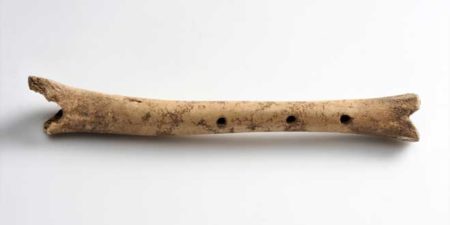
TYPES OF INSTRUMENTS
There are many different ways to organize all the musical instruments and each one can apply the one that most convinces you.
YOU WANT TO HEAR THE SOUND OF THE INSTRUMENTS?
CONVENTIONAL CLASSIFICATION
It is the classification that we all know from childhood and why it is easier for us to recognize each type of instrument.
- Wind instruments are those that produce the sound by the vibration of the wind and the mass of air inside.
Wind instruments or aerophones are those that produce sound by vibrating the air in a sound tube, that is why in some countries they are known as musical instruments of air.
We know the name of wind instruments since prehistory, because their existence is as old as that of humanity: flutes, horns... For this same reason, from simple materials we can build homemade wind musical instruments, especially useful in children's musical games.
There are numerous ways to classify wind instruments.
Depending on the holes you have, they can be:
- [Open] [tubes][: with two or more holes]
- [Closed] [tubes][: have a single hole]
Depending on the opening we find:
- Reed wind instruments
- Bevel wind instruments
Depending on the material we find two sections:
- Wind instruments of wood
- Wind instruments of metal
The latter classification is the most common, as it gives name to the two major sections of an orchestra.
Types of wind instruments
The musical instruments of wind can be classified according to the material with which they are made, which in turn, this will cause a change of timbre.
Instruments of wind-metal:
As before, wind-metal musical instruments are referred to as being made of metal.
As a common feature, in these instruments the sound is produced by the pressure of the interpreter's lips to blow through a cup-shaped mouthpiece, which in all of them has subtle differences. The air emitted vibrates inside the tube and makes the entire journey through the tubes, which reach lengths of several meters rolled up on themselves; is the case of the horn, a musical instrument of wind of serious tonality.
Another characteristic of wind instruments is that they include piston mechanisms, and a characteristic timbre that makes up the sound of musical groups such as music bands.
There is a final subtype of brass instruments: those with mechanical blow and keyboard. The classic example is the organ, made up of multiple pipes to which the air reaches through the operation of the keys.
Wind and wood instruments :
They are named for the material in which they are built.
It is true that some woodwind instruments, today are made of metal, as is the case with the transverse flute, but for centuries they were made of wood and that is why they maintain this denomination.
There are many variants of the very popular instruments, depending on the size of the tube and the register: for example, there are many types of clarinets. In addition, some instruments have given rise to new ones: this is the case of the English horn, which is derived from the oboe.
In them, the blown air column is modulated by holes and / or keys, and there are different ways of making air penetrate depending on the instrument: mouthpieces, reeds, reeds ... Check the characteristics of each one in the list of wind instruments. featured below.
Types of wind instruments by their embouchure
Within the wind instruments we can make a classification into 5 groups according to their embouchure:
- Single tab
- Double tab
- Free reed
- Bezel with conduit
- Conduitless bezel
Bezel without duct
This subgroup of conduitless bezel wind instruments is characterized by their embouchure. In some cases we find instruments in which the conduit is a hole with a sharp mouth (such as a transverse flute or piccolo), in other cases they do not have a mouth and are blown directly through the hole (such as the example of the flute of bread).
Bezel with duct
As for the subgroup of bezel with duct, within the woodwind instruments, it differs from the previous one because these instruments do have a bezel through which the musician blows and makes the air reach the interior to produce a sound. This group of instruments is the recorder.
Single reed
The reed is a flexible sheet that sits on the mouthpiece of the instrument. Normally, this simple reed is attached to the instrument through a clamp, although instruments have been known in which the reed is made by cutting the same material and thus it is not necessary to use the clamp.
Double reed
Double reed instruments are made up of two reeds that can be attached to a mouthpiece, although there are instruments without a mouthpiece; some examples are the Oboe or the Bassoon.
Free reed
Free reed wind instruments are those instruments that produce their sound when the reeds do not vibrate against each other or against the mouthpiece. In this case the mouthpieces vibrate freely, some examples of these instruments are the harmonica or the accordion.
Names of wind instruments
Here you have a complete list of wind instruments arranged alphabetically. You can see the images of the wind instruments with their names.
- Bandoneon
- Conch
- Clarinet
- Contrabassoon
- Cornet
- Cornet
- English horn
- Horn
- Erke or Erkencho
- Bassoon
- Flute
- Transverse flute
- Bagpipes
- Gralla
- Oboe
- Ocarina
- Oliphant
- Pipe organ
- Piccolo
- Pincullo or Pingullo
- Pututu or Pututo
- Quena
- Saxophone
- Sicu
- Trombone
- Horn
- Trumpet
- Tuba
- Vuvuzela
- Panpipe
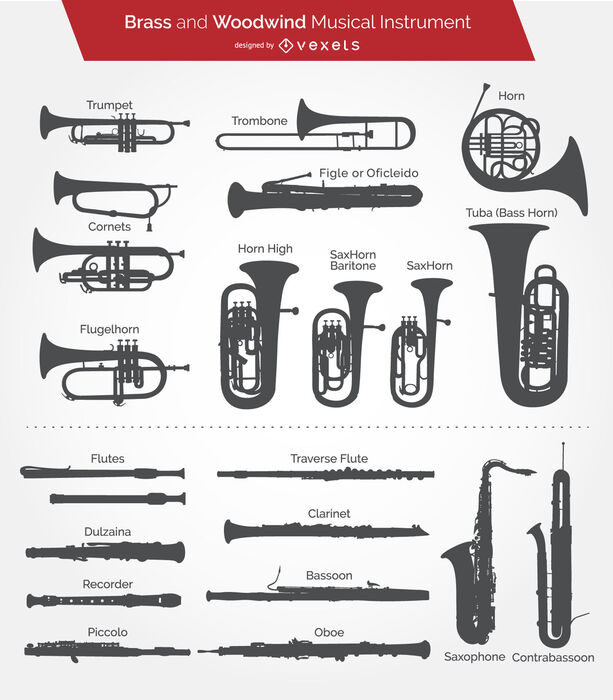
- String of instruments They are those that produce sounds through the vibration of strings and normally amplified by a resonance box.
We can classify string musical instruments according to the way we play them.
The classification of string musical instruments is as follows:
- Stringed instruments
- Plucked or plucked string instruments
- Stringed instruments
Stringed or arc instruments
They are those that need a bow that makes the strings vibrate when rubbed against them, although they can also be pinched with the fingers (a technique known as pizzicato).
The characteristics of the rubbed string musical instruments that are part of the orchestra are their four strings, technique, timbre and similar form. They are easily distinguished from each other by size and style of playing: horizontally on the neck, like the violin, or vertically on the ground, as with the double bass.
The best stringed instruments were built by three great Italian families of luthiers in the 17th and 18th centuries: the Stradivari, the Amati and the Guarnieri.
Although the most popular ones do not have frets that mark the different heights of the sounds, some like the hurdy-gurdy do.
The Violin, Viola, Cello and double bass are the best known instruments of this group.
Stringed or pressed string instruments
They are those that sound by pressing the strings with the fingers of the right hand. The left is reserved to shorten the lengths of the strings and thus cause a greater or lesser frequency and height of the sound.
A multitude of string instruments from the Baroque and Renaissance are among them (in the case of the lute, a musical instrument similar to the bandurria), but also other more modern ones such as the electric guitar.
Sometimes the strings can be plucked with the fingertips of both hands: this is the case with the harp.
There are several types within this group:
- Without neck and without keyboard:
- Harp, lyre and zither.
- Without neck and with keyboard:
- Harpsichord, spinet and virginal.
- With neck and frets:
- Guitar, banjo, mandolin, bandurria, lute, sita, bass, cuatro, Chilean guitarrón, charango, ukulele, Colombian tiple, Canarian timple, Jarana Jarocha and Portuguese guitar.
- With neck and without frets:
- Arabic lute, dobro, three-bridge guitar, kora and steel guitar.
Stringed or tapped string instruments
They are called like the instruments that produce the sound when striking the strings. This is the case of the most popular key instruments, such as the piano, which includes hammers that fall on the strings.
But not all keyboard instruments are stringed. The harpsichord, for example, has a plucked or, rather, pinched string mechanism.
The characteristics of string instruments are usually simple, so it is easy to make homemade string musical instruments with accessible materials, such as a monochord made with an open rigid box and a rubber band.
In addition, there are a multitude of oriental string instruments (Arabic, Japanese, Chinese ...) whose characteristics you can also consult on this site.
- Without keyboard:
- Hungarian psaltery or cymbal.
- With keyboard:
- Piano or harpsichord.
Names of string instruments
Here is a complete list of wind musical instruments arranged alphabetically:
- Harp
- Under
- Fretless bass
- Banjo
- Clavichord
- Charango
- Cymbal
- Zither
- Double bass
- Guitar
- Guitarron
- Lute
- Lira
- Mandolin
- Piano
- Psalter
- Sitar
- Steel guitar
- Viola
- Fiddle
- Cello
- Instruments of percussion they are what produce the sound when shaken or struck. It is without doubt the oldest way of producing music.
Percussion instruments make up a very large group. They are all those that produce sound when hit or shaken.
Rhythmic percussion musical instruments are probably the oldest in history. Although there are very complex percussion instruments, most have a simple mechanism. This is the reason why a multitude of percussion instruments for children, such as cymbals and maracas, are accessible and that homemade percussion instruments can be made easily and inexpensively.
The most usual thing in the percussion instruments that are part of the orchestra is that they are interpreted by means of drumsticks (wooden sticks with a rounded and / or padded tip that can take different forms). You can also use metal rods called brushes, very typical of the music of jazz.
It is a very heterogeneous type of instrument, ranging from popular tambourines or children's maracas to huge drums or melodic instruments such as the celesta.
There are many ways to classify percussion instruments. One of the best known is according to the tuning, since not all the sounds produced by a percussion instrument have identifiable height.
Percussion instruments of specified height
They are tuned percussion instruments, that is, they produce a sound whose pitch corresponds to a note.
They can be of very different types: timpani, xylophone, bells ...
Percussion instruments of indeterminate height
Instruments of indeterminate percussion are those that produce sounds whose pitch cannot or is very difficult to identify.
Due to their nature, these instruments are often used to clearly mark the rhythms. This is what happens with instruments like the kick drum, drums or cymbals.
They can also be classified by the nature of their material:
- Membranophones: they are those whose vibration is produced in a membrane, traditionally made of leather but currently synthetic in many cases, which is taut on a support and is struck so that it resonates. Some membrane instruments are the box or the zambomba.
- Idiophonesor self-resonant: these are those that produce the vibration when impacting directly on their own material, which must therefore be hard: wood, metal or even stone. This is the case of the lyre or the triangle.
There are many percussion instruments from different cultures: rhythmic instruments from Black Africa, Peruvian and Andean percussion musical instruments, or sheet and small percussion percussion developed in Europe under the protection of twentieth-century musical pedagogies (Carl Orff, Edgar Willems ...)
Names of percussion musical instruments
Here is a complete list of wind musical instruments arranged alphabetically:
- Atabaque
- Battery
- Drum
- Bongo drum
- Cabasa
- Campaign
- Peruvian box or drawer
- Castanets
- Celesta
- Create them
- Gong
- Maracas
- Marimba
- Rattle
- Tambourine
- Taiko
- Drum
- Drum
- Triangle
- Xylophone
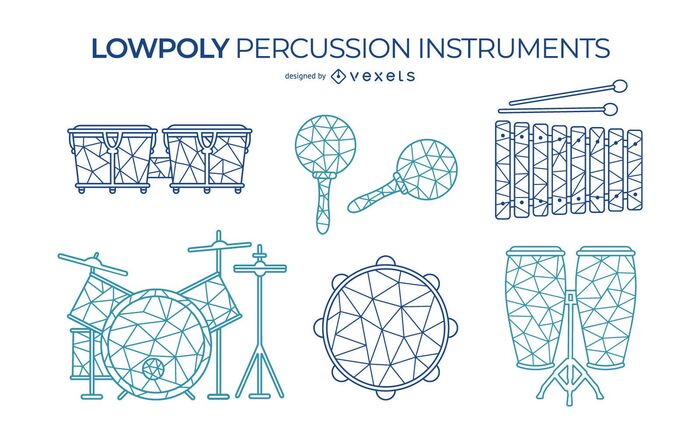
- Electronic musical instruments they are those that produce sound through electronics and that have emerged during the last century, thanks to the advancement of technology.
Electronic instruments or electrophones are those that produce sound thanks to electrical energy
At the end of the 19th century and the beginning of the 20th, the first instruments that generated sound and noise through the vibration of an electromechanical circuit began to be invented. During the first half of the last century, different types of music were developed that used these electronic instruments, thanks to figures such as the futurist painter Luigi Russolo.
In 1928, the invention of the Ondas Martenot instrument, named after its inventor Maurie Martenot, marked a turning point in the interest of musicians and inventors to develop the potential of electronic instruments. During the 1970s and 1980s, analog synthesizers gave way to digital ones.
Electronic instruments, still in development today, interested many composers of academic music from their beginnings, such as Stockhausen or John Cage, but also many groups that popularized the most modern styles of music: The Residents, Vangelis or Jean Michel Jarre.
With the invention of MIDI, thesamplerand other artifacts, electronic music has reached not only the mass media but also all users' devices, managing to popularize music made with electronic instruments.
Power generation instruments
Electric generating instruments, as their name suggests, replace the traditional acoustic sound generator (string in string instruments, tube with air in wind instruments) by the harmonic oscillation of an electronic device. This means that sound is produced and projected entirely by electricity.
In turn, these electromechanical instruments can be:
- Radio-electric: the sound is produced entirely from electrical oscillations. For example, the synthesizer or the instrument called Martenot Waves.
- Mechanical-electrical: combine mechanical and electrical elements to generate sound. This is the case of the theremin or the Melotrón.
Electrically amplified instruments
These are traditional instruments that are electrically amplified. There fore, these are instruments that do not usually have a natural resonance box, but rather require electricity to amplify the sound they produce.
We include in this category instruments such as the electric guitar or electric bass, widely used in genres such asrock, but also others as useful as the electric keyboard or the electric violin, which has an increasing role in music formations folk.
Electronic music keyboards
Given the high volume of inquiries we have had about where and how to buy musical keyboards, I have created a new specific section to resolve these types of questions.
